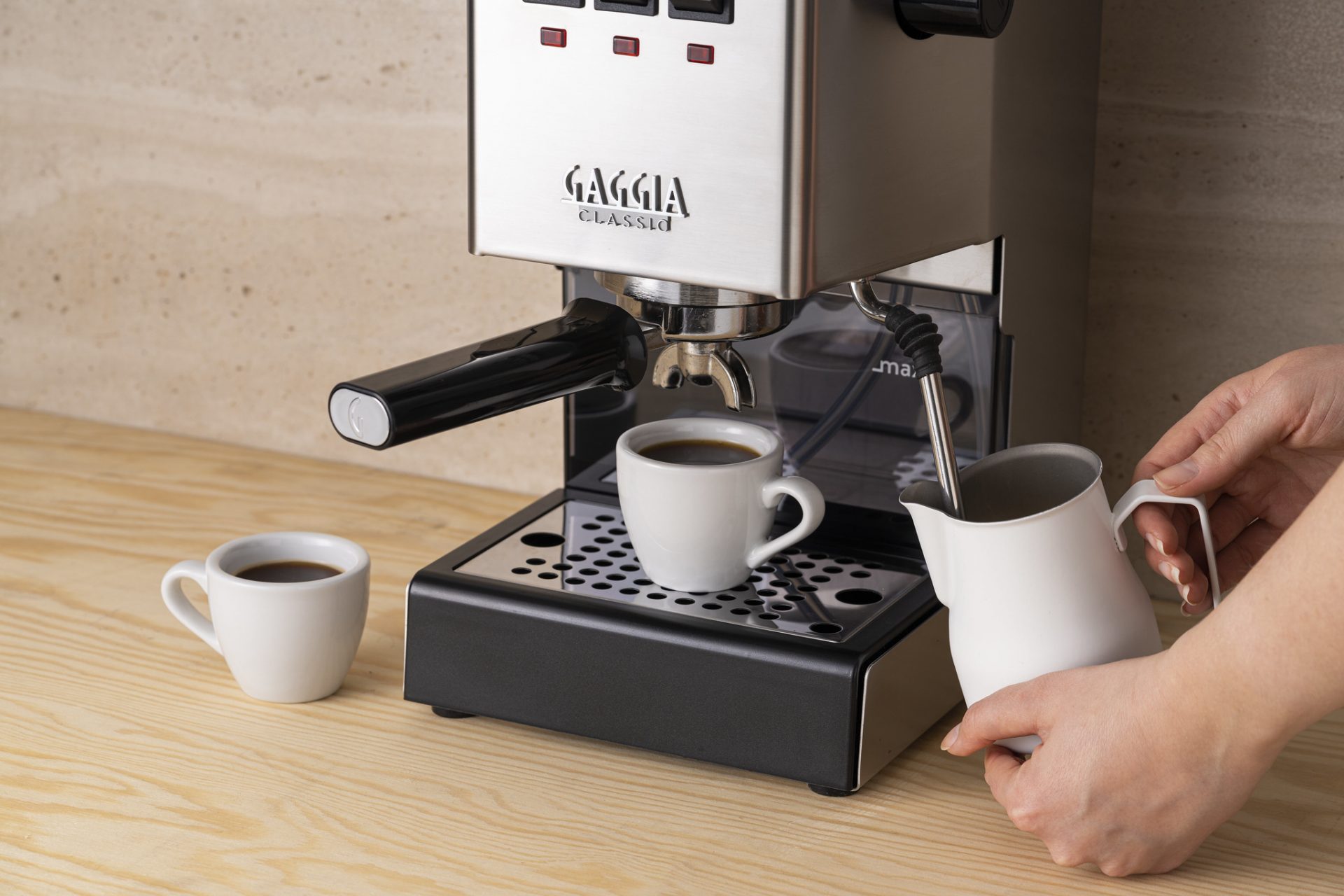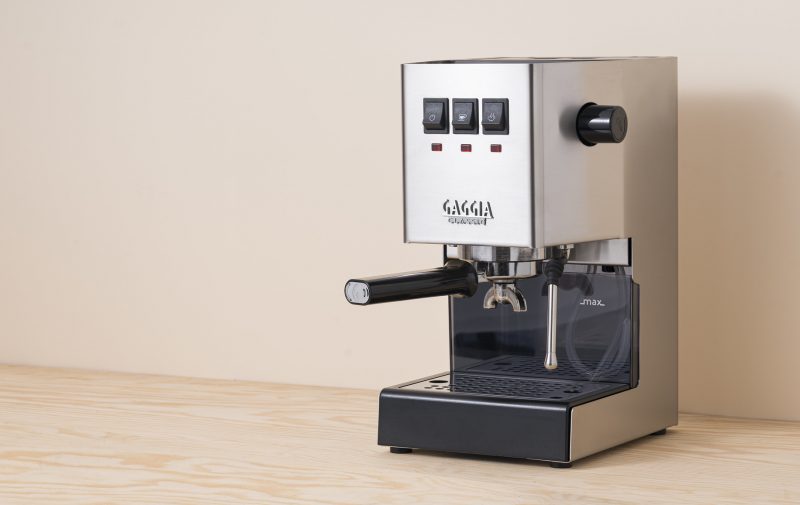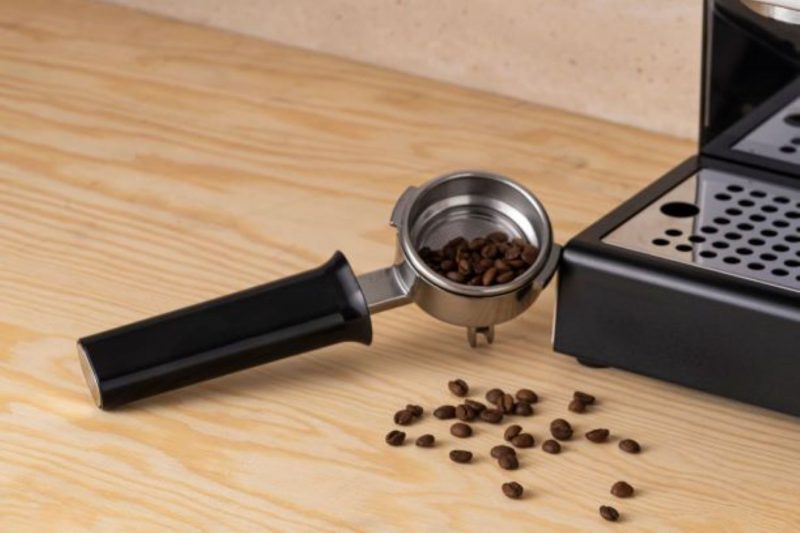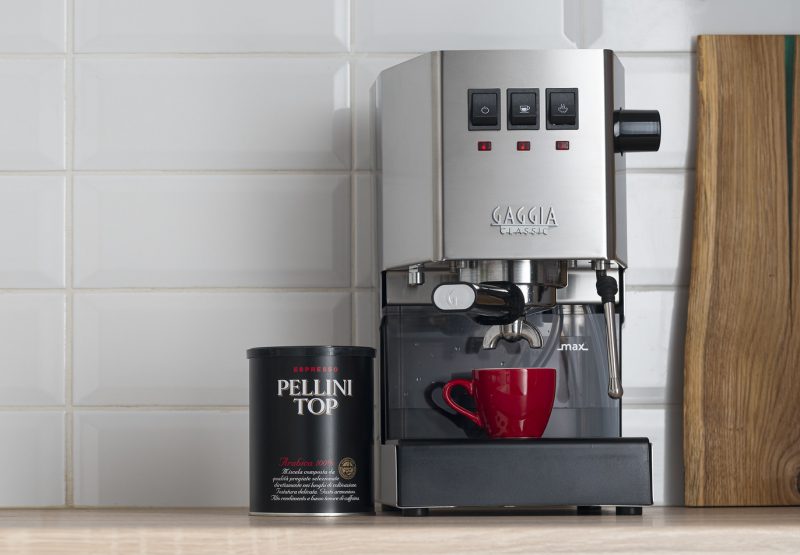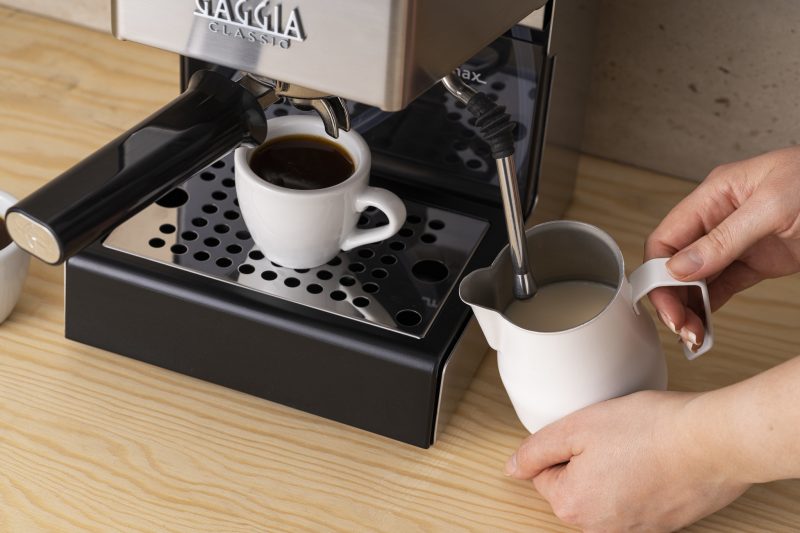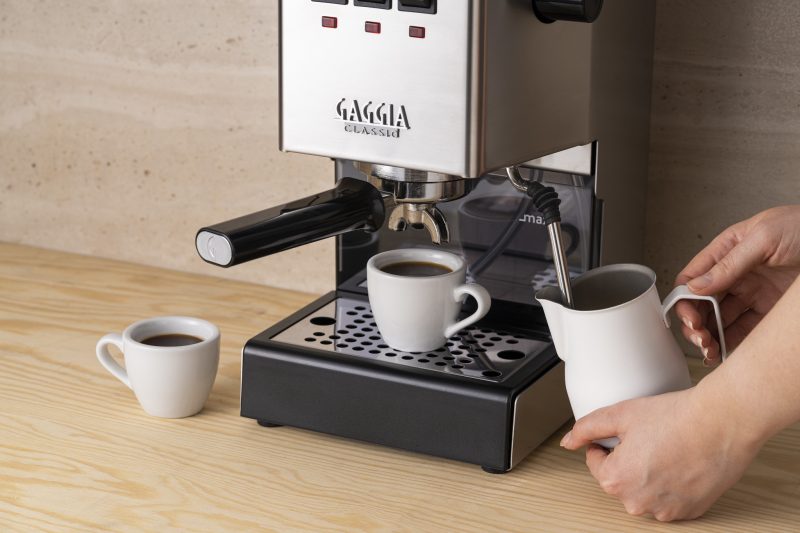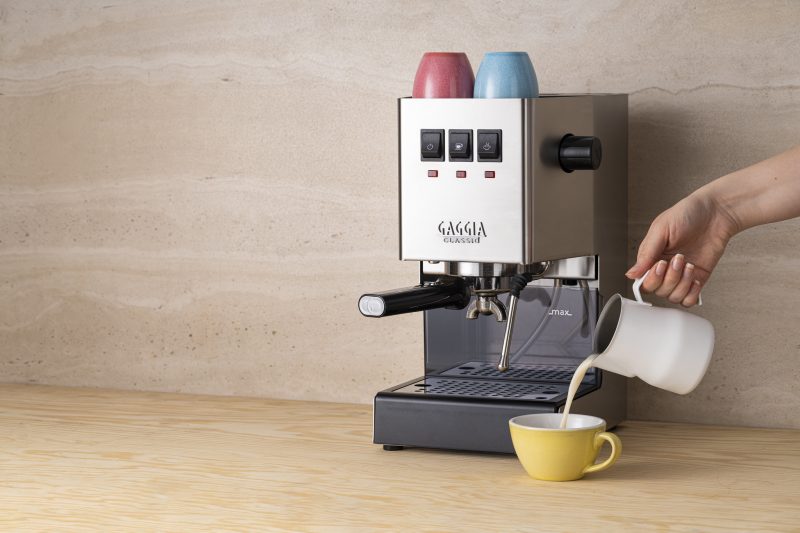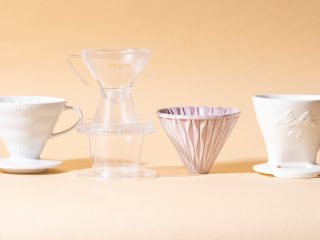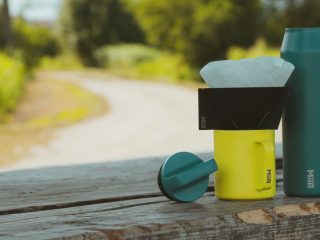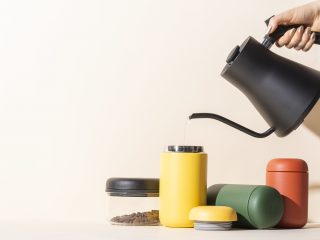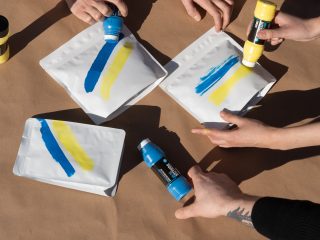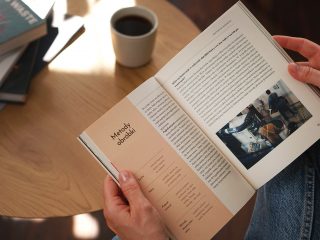Manual espresso machines used at the cafés are professional coffee machines, which may cost many times as much as a new mid-range car. Fortunately, there are also more domestic versions – cheaper and smaller than their café counterparts. Such is the Gaggia Classic, a device which is supposed to bring joy to many “home baristas”. Does it, indeed?
Design and components
Gaggia New Classic is another, improved version of the previous models which have been produced since 1991. The current “New Classic” model, apart from the refreshed design, has a professional steam wand for frothing milk (its design is “copied” from professional espresso machines), a three-way valve and an aluminum boiler. The espresso machine is a solid with a base of 23 × 24 cm and a height of 38 cm. The machine weighs almost 8 kg, much to its advantage – a heavier device is more stable and will not tip over when a beginner coffee enthusiast is overwhelmed by emotions.
The construction seems to be decent and well-fitted – mostly made of stainless steel. It is not a “made in China” espresso machine from a supermarket, but a “made in Italy” prodigy of Gaggia, a company which has almost 80 years of experience in producing espresso machines. The New Gaggia includes a transparent, 2.1-liter water tank – you can control its condition by looking at the front of the machine. The drip tray under the water outlet from the “group” seems to be roomy and stable – during the tests I did not experience any kitchen flood.
The use of the attached plastic tamper (an element for pressing coffee in a portafilter) is questionable, as it gives quite an unprofessional impression compared to the entire machine. This is not a problem of just Gaggia, but of many home coffee machines. Nevertheless, the included tamper works fine enough, at least at the beginning of the espresso journey. For professionals, an alternative is to buy a higher quality tamper – keep reading.
A heavy, brass filterholder (portafilter) has a plastic handle – just like the tamper, it seems less durable and weaker – but these are details compared to an almost armored structure.
At the top of the coffee machine there is a plate for cups, which warms them up before brewing coffee – personally, I haven’t found it much useful, because the process of heating the cups takes quite a long time and after 20 minutes the device goes into sleep mode, turning off the heating of the entire thing. The surface of the cup plate is made of a polished piece of steel, which gets quite scratched if the cup base is rough. Therefore, for visual connoisseurs, it will be better not to keep ceramics and porcelain directly on the device – you can heat them with boiling water from a kettle or water from an espresso machine.
A distinguishing feature among the affordable manual coffee machines is the three-way electromagnetic valve used in the Gaggia Classic. It allows you to drain the water and pressure remaining after espresso brewing into the drip tray, which is safe and convenient – such a solution is standard in professional commercial coffee machines.
In the package, in addition to the coffee machine, you will find a portafilter, the so-called handle for brewing coffee, 3 filters, a tamper, a measuring cup, a user manual (also in Polish) and a warranty card – a basic set, which is what we need to start. Well, apart from the grinder, scales and coffee – these must be purchased separately.
The attached filters include: the “crema perfetta” strainer – it is recommended for beginners, because it will allow you to obtain crema on top of an espresso, even if you’re not very skilled at preparing one; standard filter for a single espresso (for 8-9 g of coffee) and a standard, double strainer (for 16-18 g of coffee). The latter will provide us with a flavor-balanced coffee and will help us make the perfect espresso at home.
The black world of espresso
When discussing the Gaggia Classic, you should remember that it is a fully manual coffee machine. What does it mean? Well, basically that the user is responsible for performing all the individual steps to get an essential espresso – you must know how to brew espresso, or be determined to acquire proper knowledge. A home barista should remember a few variables that affect the taste of an espresso:
- Coffee grind – adjust it so that you get tasty coffee at the right brewing time.
- Brewing time – it may vary depending on the beans, but it should basically take about 25-35 seconds
- The force of pressing the coffee in the filter – you must press the coffee with the same force each time with the tamper. If the extraction takes for too long – press it with less force, if too fast – a little harder.
- Dosing – when brewing espresso, initially it is good to use a 1:2 ratio, i.e. about 16-18g of ground coffee and 32-36g of the resulting espresso. To obtain such proportions, you will need a scale, preferably weighing to 0.1 accuracy.
What does espresso brewing look like?
- First, heat up the coffee machine – this is an important step because a cool device or a cold portafilter will significantly worsen the taste of the coffee
- Then, grind 16-18g of coffee into the portafilter (in the case of a “double” strainer), and press it
- Next, turn on the water drain for a moment, mount the portafilter in the handle of the coffee machine and place the cup on the scale, under the portafilter outlet
- Start brewing – turn on the water drain and start the timer to track the time of pouring the coffee
- Turn off the water drain
- That’s it – enjoy!
It is worth noting that there is… not too much space under the hooked portafilter. You can deal with that in two ways: the first one is to use low-weight cups; the second is to disassemble the drip tray, which will allow any large cups and glasses to be placed under the portafilter outlet.
The machine is not equipped with pre-infusion programming, the so-called pre-brewing. If you want to do it – you must do it manually by controlling the water drain release button.
Frothing the milk
Time for the milky side of the caffeine world. The Gaggia Classic has a professional milk frothing wand, the kind you can see in the professional coffee machines. The difference is the power of the devices. Gaggia allows you to froth 200ml of milk in approx. 40 seconds. Sometimes, however, it seems to lack the power to achieve the desired degree of milk frothing. Therefore, it is worth waiting for a while (even if the pilot light already indicates that the steam wand is ready to use) before you start frothing for the machine to heat the aluminum boiler to a higher temperature, which will allow you to aerate and heat the milk freely.
What does milk frothing look like?
- After brewing the espresso, switch the device to the frothing mode
- After approx. 30-45 sec. the machine is ready for use
- Drain a little bit of steam, preferably onto a slightly damp cloth, so as not to scald yourself, and wipe the remaining water off the steam wand
- Place the nozzle below the surface of the milk in the jug and turn on the full steam power
- Froth the milk until the sides of the jug start to feel hot – it will be approx. 70°C of the milk itself (you can use special thermometers to facilitate frothing to a specific temperature)
- Close the steam wand, wipe the remaining milk off with a cloth and let a little steam escape to push out the remaining milk residues from the inside
- Pour the frothed milk onto the surface of the espresso, and try your hand at the coffee decorating technique – latte art
- Depending on the type of milk-based coffee, we can froth the milk more or less, getting a more liquid consistency or a greater thickness of milk froth.
- Enjoy!
Some tips to help you get well-frothed milk in the Gaggia Classic:
- Froth milk in a small milk jug, a 200 ml one will be perfect
- Use cold milk from the fridge, this will give you more time to aerate the milk before it reaches 70°C
- Hold the milk carafe at an angle and place the spout gently under the milk surface.
- Froth the milk until the jug starts to burn your hands – exceeding this threshold will result in burnt milk which will smell like burnt scrambled eggs (proteins present in the milk congeal above 70°C)
- Keep practising! Rome was not built in a day, frothing milk is not a skill we are born with, it requires training and learning – each new success will lead to further achievements in the field of homemade milk coffees
Comfort of use
With each day of testing, Gaggia felt more and more intuitive to me. It was a well-coordinated relationship – not always everything went smoothly, but the pleasure of dealing with equipment of quality and construction like that of professional machines and the taste of the extracted coffee rewarded the effort and time initially required to learn how to use the coffee machine. It is a good idea to consider buying an electronic espresso grinder, as the use of a manual one significantly slows down the preparation of coffee with a manual coffee machine. It will also increase the comfort of the entire coffee preparation process and shorten the time of brewing subsequent coffees, e.g. for family or friends.
Clean your coffeemaker, buddy!
The cleanliness of the device has a direct impact on the quality and taste of the prepared coffee. If we forget to clean Gaggia Classic, it can repay with a change of taste, unstable brewing or various failures that are better not to be caused. It is enough to remember to clean the entire structure regularly. The portafilter and the strainers can be placed in a Cafiza solution, e.g. overnight, to enjoy a clean and hygienic components in the morning. The shower – the element that doses water onto the surface of the coffee – can be cleaned with a brush that will help to get rid of coffee residues from small nooks and crannies around the portafilter holder, the so-called “group”. The boiler system with inlet hoses and valves can be descaled from time to time – especially when the water in the pipes is rich in minerals and hard. The water container can be pulled out of the Gaggia construction and washed directly under running water. As for the bodywork, it is enough to wipe the coffee machine with a wet cloth.
What to add to the basket?
The machine is enough for you to get good coffee, whether it is black like the soul of a heavy metal man or mild, even princely, and milk-based. However, some things are worth buying (or considering). A few additional elements will improve the comfort of work and allow you to squeeze even more out of the Gaggia Classic.
- A good grinder – you can’t do without it! A good grinder with a wide adjustment range allows you to choose the right degree of grinding for specific coffee beans. The quality of the grinder directly influences the taste of the coffee, and you can read about it here.
- A tamper – an element used to press down the ground coffee before it is brewed. The plastic one available with the machine is good only for the beginning. It is worth investing in a decent and heavy tamper with a slightly wider diameter, which will allow you to brew tastier and more repeatable shots.
- Precision filter and a shower – there are many profiled spare parts that will allow you to get an even better cup of joe. A properly calibrated filter allows for greater repeatability that all more advanced home espresso enthusiasts are fighting for. A higher-quality shower will allow even distribution of water to the ground coffee beans and keep the so-called “group” clean.
- Good scales – as I wrote earlier, without good scales you will not get an espresso on a manual espresso machine. During brewing, you must control the amount of extracted coffee, and before the process itself – the amount of beans that should be ground for a single “shot”. Good scales with a 0.1g accuracy is a must!
- Milk frothers – their shape and dimensions allow for quick and proper milk frothing. They are available in various sizes, shapes and colors.
- A knock tube and a tamping mat – accessories that make coffee preparation quicker and cleaner. A knock tube will allow you to dispose of coffee grounds more efficiently after brewing. The tamping mat will allow faster and more convenient tamping of coffee in the strainer.
- A brush – used for sweeping ground coffee residues from the filter in the portafilter. It comes in handy when you brew many coffees one after the other.
- A group cleaning brush – allows you to clean the shower and the nooks and crannies around the fixing place
- A cloth – very useful when frothing milk, especially for draining water from the nozzle, as well as for wiping the steam wand after using it.
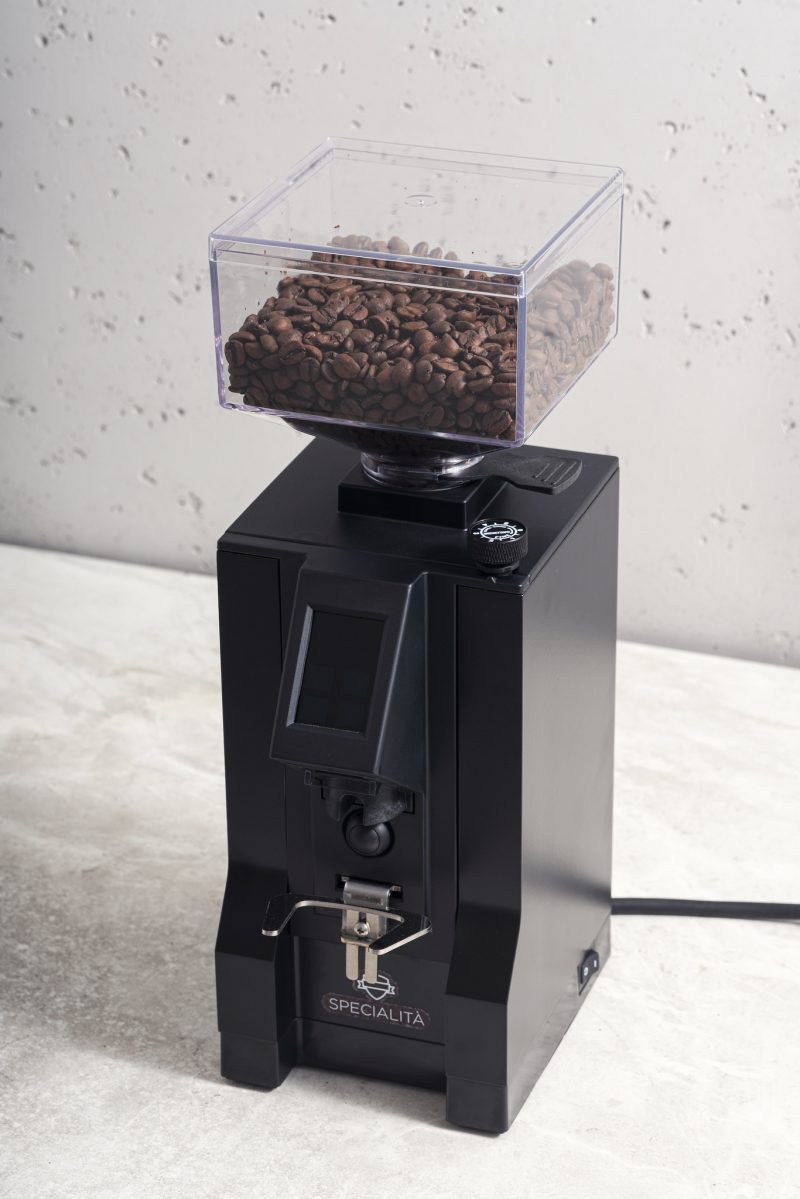
Who is it for? A few words at the end…
Who is Gaggia Classic for? It is definitely a machine for enthusiasts and admirers of small, concentrated coffee straight from Italy. At a price oscillating around PLN 1,500 it’s hard to find something better, not to mention a similarly durable structure. This, not so small, brave coffee machine will work for every person who wants to develop their skills and knowledge in the field of brewing espresso, milk based coffees and frothing milk, including making patterns using the latte art technique. Gaggia Classic is a home barista companion in the development of espresso brewing skills. Is it worth it? As long as you have the time to fully learn how to use this device – yes, definitely. You can buy components extending the possibilities of Gaggia Classic – calibrated strainers, showers, sets reducing the power to the classic 9 bar and many others. A large number of users and plenty of advice on the Internet proves that it is a coffee machine for many years to come. It seems downright bulletproof – within reason, of course!
Another question is: who is Gaggia Classic NOT for? It will not work for people who want to get tasty coffee quickly, without much effort, at the touch of a button. It is a manual espresso machine and requires more attention than automatic and semi-automatic solutions. Milk-based coffee lovers can consider an alternative solution, such as the Rancilio Silvia coffee machine, which has a more powerful steam wand. You will also froth milk with Gaggia Classic – but it will require practice and a bit more time. You should just bear in mind that the mentioned alternative by Rancilio costs almost PLN 1,000 more than the tested Gaggia New Classic.

